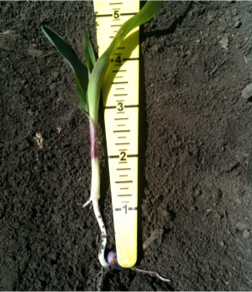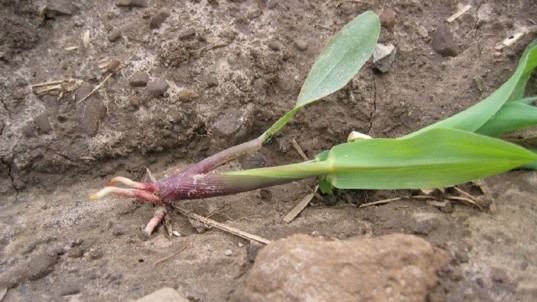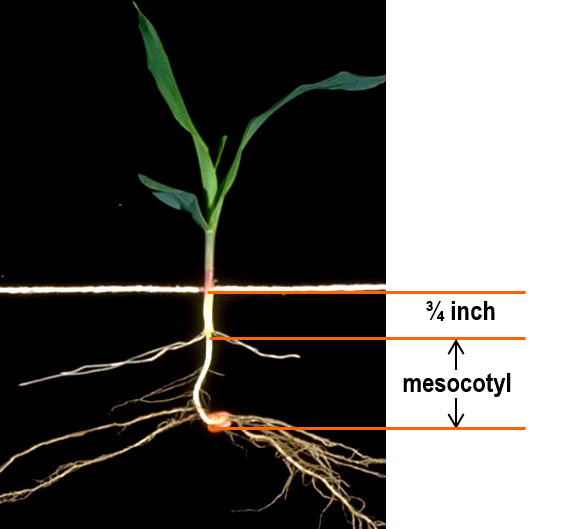Corn Planting Depth
Something went wrong. Please try again later...
My Account




Figure 3. Corn seedling showing how to assess depth of seed placement after planting by measuring from the seed to the nodal roots.
The foregoing is provided for informational use only. Please contact your Pioneer sales professional for information and suggestions specific to your operation. Product performance is variable and depends on many factors such as moisture and heat stress, soil type, management practices and environmental stress as well as disease and pest pressures. Individual results may vary. Pioneer® brand products are provided subject to the terms and conditions of purchase which are part of the labeling and purchase documents. CF210402